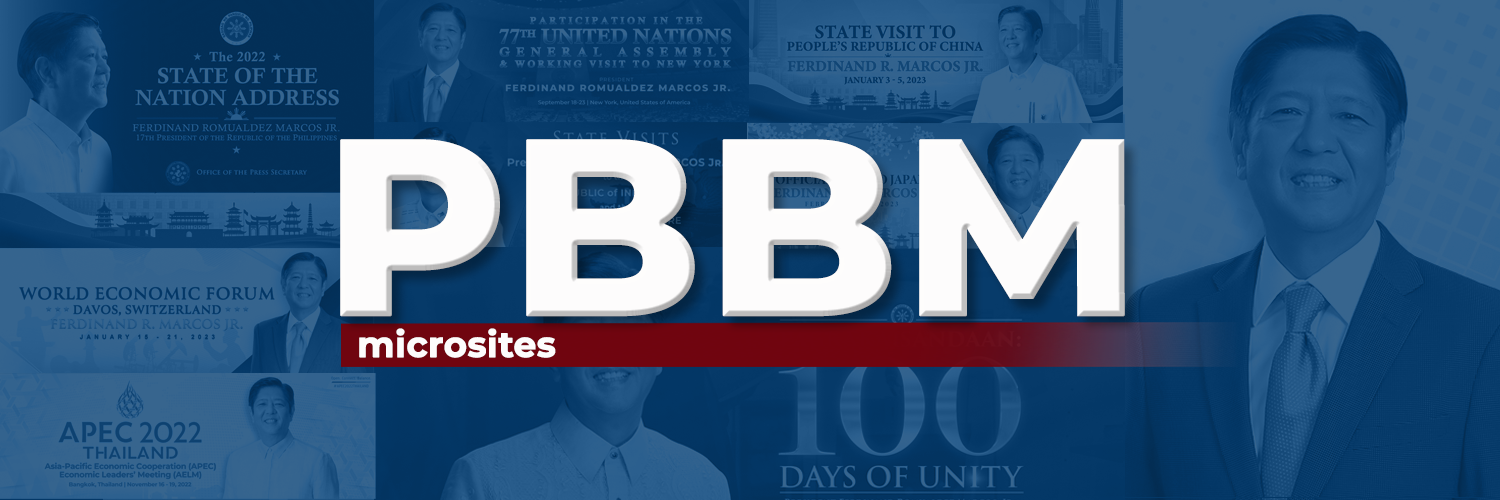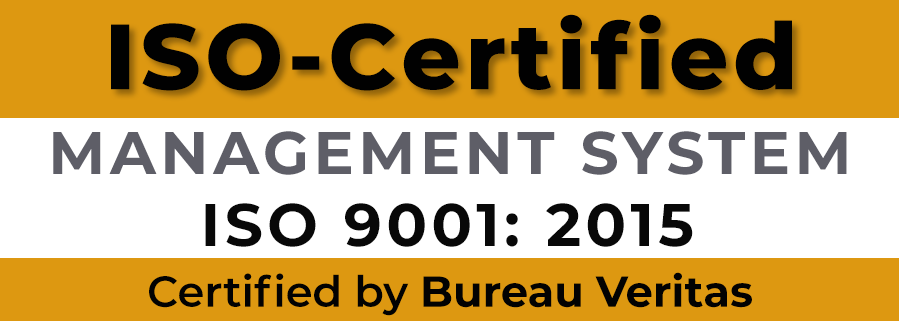April 29, 2015 – News Releases
 |
| 29 April 2015 |
APEC NEWS RELEASES
|
|
|
| President Aquino returns from ASEAN Summit in Malaysia |
| President Benigno S. Aquino III returned to Manila on Tuesday afternoon after attending the 26th Association of Southeast Asian Nations (ASEAN) Summit in Malaysia from April 26 to 28.Outlining his accomplishments during the Summit, the President said the Philippines’ campaign for the resolution of territorial disputes in the South China Sea through international law has gained support from Malaysia.
“Naglabas ng pahayag ang Chairman ng katatapos lang na ASEAN summit na si Prime Minister Najib Razak ng Malaysia. Dito, sinegundahan ang ating pananaw na kailangang isabuhay ng lahat ang mga prinsipyong nakasaad sa Declaration on the Conduct of Parties in the South China Sea,” he said. “Sa pamamagitan nito, masisiguro na ang mga pagkilos ng mga bansa ay may paggalang sa karapatan ng bawat isa,” he said, adding that he is encouraged by the increasing number of countries that have recently shown their support for the Philippines. President Aquino said he also pushed for measures to strengthen regional cooperation so that responding to such problems as terrorist threats, the effects of climate change, and pandemics would be easier. He noted that it was agreed during the Summit that the ASEAN member states would collectively send aid to earthquake-stricken Nepal. After the ASEAN Summit, President Aquino attended the Brunei Darussalam-Indonesia-Malaysia-Philippines East ASEAN Growth Area (BIMP-EAGA) Summit, where he and his counterparts from the three countries discussed ways to strengthen the region. “Mayroon tayong tinatawag na focus areas sa bawat bansa na di-gaanong nakakasabay sa kaunlaran. Sa halip na tingnan ito bilang problema, itinuturing natin itong isang oportunidad sa pag-asenso. Magkakalapit lang ang lokasyon ng nasabing focus areas, kaya’t praktikal lang na ikonekta at paunlarin ang mga ito,” he explained. “Sa ganitong paraan, mapapalawak ang merkado na higit sa sakop na teritoryo, at mapapabilis ang pagpapalitan ng kalakal, teknolohiya, at kaalaman sa rehiyon.” The President further said that while in Malaysia, he met with Vietnamese Prime Minister Nguyen Tan Dung to expand the two countries’ bilateral ties, covering the areas of defense, maritime cooperation, trade and investments. “Nagpasalamat din tayo sa kanila sa pagsagip sa anim na mangingisdang Pilipino nang lumubog ang kanilang bangka sa Southwest Cay Island nitong Enero,” he said. President Aquino also noted that he spoke with Indonesian President Joko Widodo on the sidelines of the Summit to make another appeal to spare the life of Mary Jane Veloso, who has been sentenced to death for drug smuggling. “Patuloy ding sinisikap ng inyong gobyerno na maglatag ng mga hakbang upang maiwasan ang ganitong mga kaso na nasasangkot ang ating Overseas Filipino Workers. Maigting nating isinulong ang halaga po ng pagkakaroon ng ASEAN Instrument for the Protection and Promotion of the Rights of Migrant Workers. Sinuportahan din natin ang pagtangkilik sa ASEAN Convention on Trafficking in Persons at ang Regional Plan of Action tungkol dito,” he said. The government, he said, is striving to create better job opportunities in the country so Filipinos need not seek work abroad to earn a living. “Tunay po na sinasagad natin ang pagbiyahe sa ibang bansa upang makapagbukas pa ng pinto ng pagkakataon sa ating mamamayan. Muli’t muli nating pinapatunayan sa mundo na maaasahan na tayong katuwang sa pag-unlad ng lahat,” President Aquino said. At the Ninoy Aquino International Airport to welcome the President were Justice Secretary Leila de Lima, Agriculture Secretary Proceso Alacala, Labor Secretary Rosalinda Baldoz, Defense Secretary Voltaire Gazmin, Environment Secretary Ramon Paje, Transportation Secretary Joseph Emilio Abaya, Science and Technology Secretary Mario Montejo, and Commission on Higher Education Chairperson Patricia Licuanan. PND (ag) |
|
|
| 26th ASEAN Summit concludes, regional leaders adopt three declarations |
| (LANGKAWI, Malaysia) The 26th Association of Southeast Asian Nations (ASEAN) Summit concluded on Monday evening with the adoption of three declarations, including the declaration on a people-centered ASEAN.The summit, which carried the theme “Our People, Our Community, Our Vision,” was chaired by Malaysia.
At the conclusion of the summit in Langkawi, President Benigno S. Aquino III and his fellow Southeast Asian leaders adopted three declarations: the ‘Kuala Lumpur Declaration on a People-Oriented, People-Centered ASEAN’, the ‘Langkawi Declaration on the Global Movement of Moderates’, and the ‘Declaration on Institutionalizing the Resilience of ASEAN and its Communities and Peoples to Disasters and Climate Change’. Under the first declaration, the Southeast Asian leaders pledged to continue establishing a people-oriented, people-centered and rules-based ASEAN community, while under the declaration on the global movement of moderates, the leaders agreed to strengthen ASEAN unity and solidarity and its central role in maintaining and promoting peace, stability and prosperity in the region. Meanwhile, under the declaration on institutionalizing the resilience of the bloc to disasters and climate change, the leaders committed to strengthen resilience by reducing existing disaster and climate-related risks. This year’s summit was held in Kuala Lumpur and Langkawi, Malaysia from April 26 to 28. During the summit, President Aquino and his fellow leaders discussed, among others, the establishment of the ASEAN Community by the end of this year, its post-2015 vision, and external relations and future direction. The 10 ASEAN member states consist of Brunei Darussalam, Cambodia, Indonesia, Laos, Malaysia, Myanmar, Singapore, Thailand, Vietnam, and the Philippines. The summit is the association’s highest policy-making body. PND (co) |
|
|
| Philippine government thanks Indonesian President for granting Veloso a reprieve |
| The Philippine government has expressed its gratitude to Indonesian President Joko Widodo for delaying the execution of convicted drug mule Mary Jane Veloso. “The Philippine government thanks President Widodo and the Indonesian government for giving due consideration to President Aquino’s appeal that Mary Jane Veloso be given a reprieve,” Communications Secretary Herminio Coloma, Jr. said in a statement issued on Wednesday morning.
“Such reprieve provides an opportunity for the perpetuation of her testimony that could shed light on how a criminal syndicate duped her into being an unwitting accomplice or courier in their human and drug trafficking activities,” Secretary Coloma added. The 30-year-old Veloso was among eight foreigners scheduled to be executed by firing squad at midnight on Tuesday at the Nusakambangan maximum security prison. As a last-ditch effort to save the drug convict, President Benigno S. Aquino III proposed to the Indonesian government that Veloso be made a witness to identify the syndicate that used her to transport illegal drugs to Indonesia. The president’s proposal came on Tuesday after Maria Cristina Sergio, the alleged recruiter who duped Veloso into smuggling 2.6 kilos of heroin into Indonesia in April 2010, went to the police in Nueva Ecija. Reports said the Indonesian president held an emergency meeting with his cabinet officials to discuss President Aquino’s proposal. Coloma also thanked the people for continuously praying for Veloso, a mother of two. “We also thank the Filipino people for their prayers and for keeping vigil for Mary Jane’s cause,” he said. Sergio and her live-in partner Julius Lacanilao are facing charges of illegal recruitment, human trafficking and estafa by swindling, filed by the Department of Justice. PND (jm) |
|
|
| Expert bats for disaster risk finance as a tool vs. adverse impact of climate change |
| (BACOLOD CITY) Economies must focus more on building stronger disaster risk financing to shield their people and communities from the adverse impact of more destructive and frequent natural calamities, an expert said during the opening of the APEC conference on disaster risk finance here.
“Whatever we will be discussing here today is very real for millions around the world. Our cost tag with the disaster victims and our best possible tribute will be to make this conference a great success because disaster can strike anywhere, at any time, in any part of the world,” Arup Chatterjee, the Principal Financial Sector Specialist of the Asian Development Bank, said in his opening remarks referring to the quake victims in Nepal. He said now is the time to respond to the world’s growing needs by empowering individuals supporting communities and backing promises with resources. Climate change is intensifying risks for hundreds of people especially in landlocked and small islands as well as developing economies with vast coastal areas and authorities must confront this reality. The Philippines, a disaster-prone country, can provide a lot of successful initiatives that can be emulated by other economies, he added. As globalization makes the world even smaller, Chatterjee said an earthquake in one country can shake up the financial market of another, and tropical cyclones in one region can cause economic turbulence in another. “And therefore disaster risk financing offers a tool box of armaments or instruments to defend against the adverse impact of climate change,” he explained. “It is a smart option for governments and the wise investment for business and households to strengthen resilience and offset the impact of natural disasters.” Nine out of ten disaster fatalities come from low and middle income economies and governments must help the poor and the most vulnerable by providing people with micro-insurance innovative tools, Chatterjee said. The global annual price tag of damage exceeds more than $300 billion, he noted, adding nations can either watch the number grow as people suffer or they can dramatically lower that figure and invest savings in development. Disaster risk financing must be considered in future decision making and also in the financing process, Chatterjee said. He also cited a 2012 study of five select countries which shows that a one-percent increase in insurance penetration can result in a 13-percent reduction in uninsured losses and an increase investment of two percent of GDP and a 22 percent reduction of the tax burden. He noted that those are the benefits provided by disaster risk financing and insurance. As countries build stronger infrastructures and financing tools, he noted that true resiliency comes from strong bonds between countries and communities — something that is always demonstrated after a disaster strikes. In the two and a half day meeting here in Bacolod City, participants must translate crisis into opportunity, he said adding that ADB is committed to strengthening this bonds. He also asked conference participants to act in the global spirit of solidarity and to make the world safer and prosperous for all. The Bacolod City meeting has a theme: “Disaster Risk Finance-APEC Roadmap for Resilient Economies.” PND (as) |
|
|
| Insurance Commission Chief highlights importance of roadmap in preserving economic gains |
| (BACOLOD CITY) Insurance Commission Commissioner Emmanuel Dooc on Wednesday stressed the need to have a regional insurance roadmap to sustain the resiliency of the economies and protection of citizens in Asia and the Pacific.
In his speech during the opening of the two-day meeting on Disaster Risk Finance – APEC Roadmap for Resilient Economies being held at the SMX Convention Center in this capital city of Negros Occidental from April 29-30, 2015, Dooc said governments should take on a pro-active posture on disasters instead of being reactive. He said funds that are being used in addressing calamities could be used instead to further boost economic growth. “It becomes imperative for us to put up a roadmap to make our region resilient,” he said. Relatively, the Insurance Commission chief highlighted the importance of microfinance in alleviating the lives of the poor. For one, he stressed the need for an effective financial insurance program, which he said “should provide economic opportunities not just for the elite but for the broad cross section of the population.” He said the Philippines, for one, had experienced the benefits of having a microinsurance system after Typhoon Yolanda (Haiyan) struck Eastern Visayas in November 2013. He said nearly half a billion pesos worth of micro-insurance benefits, at an average of Php 5,000-10,000 per policy holder, was released after the calamity. “Insurance benefits are not dole-outs , which impair the dignity of the recipient. Premiums were derived from honest labor,” he said. Dooc disclosed that the Philippines currently holds the top position among 31 countries in Asia and Oceania in terms of microinsurance penetration. He noted that there will always be microinsurance initiatives, “for there will always be poor among us.” He, however, stressed that “the poor should not be poor” for life, and one effective way of ensuring this is through microfinance initiatives. “Providing the roadmap for them to be there tomorrow is our responsibility today. With all the resources behind us, we cannot fail,” he added. PNA (jv) |
|
|
| Business sector recognizes role of microinsurance in Asia Pacific’s economic growth |
| (BACOLOD CITY, Negros Occidental) The business sector recognizes the importance of microinsurance and disaster risk finance as tools for the Asia-Pacific region’s sustained economic growth.
“Microinsurance and disaster risk finance are tools that will be as important for the region’s sustained economic growth as they are for the personal lives of people living in exposed and vulnerable communities,” Dr. Julius Parrenas, the Asia-Pacific Economic Cooperation (APEC) Business Advisory Council’s (ABAC) delegate to the APEC Finance Ministers’ Process (FMP), said during the opening of a disaster risk finance conference here Wednesday. Parrenas said that for these reasons, the ABAC strongly supports the Department of Finance’s initiative to include these in the Cebu Action Plan that will be launched in September. He said it is now clear that without broader access to finance, especially for micro, small and medium enterprises (SMEs), APEC member economies cannot stay on that path. The ongoing discussion on disaster risk financing is a very important element of inclusive growth, he added. Insurance, he said, tends to be an underappreciated part of the financial sector, because many people only realize its importance after they experience a disaster. It is also important in the modern world of supply chains, in which disasters can have severe consequences that affect the global economy, he said. For instance, the earthquake and tsunami in Japan and the flooding in Thailand a few years ago clearly demonstrate this, Parrenas said. “Empowering small and micro enterprises and deepening supply chains to reach the agricultural hinterlands and peripheries of APEC economies, require measures to promote resilience against unexpected events and disasters,” he explained. Parrenas further cited the Finance Ministers’ Process, a platform that brings together the public and private sectors and experts from multilateral, development and academic institutions to accelerate reforms that can facilitate the growth of the region’s financial markets and services. This platform, the Asia Pacific Financial Forum (APFF), now involves some 300 experts from more than 150 leading global firms and institutions in the region. These institutions and firms collaborate in six work streams to help expand SMEs’ access to finance, accelerate the growth of deep and liquid capital markets, and develop the region’s long-term investor base, Parrenas said. One of these work streams deals with insurance and retirement income, counting among its collaborators a number of leading insurance companies and pension funds in the Asia Pacific, he said. The work stream has also decided to set up its microinsurance and disaster risk finance substream, according to Parrenas. Stakeholders in the financial sector are attending the conference, which has for its theme, “Disaster Risk Finance –APEC Roadmap for Resilient Economies”. PND (as) |
|
|
| President Aquino to visit Filipino communities in United States, Canada |
| President Benigno S. Aquino III will meet with Filipino communities when he goes to the United States and Canada on the second week of May.
In a press briefing in Malacañang on Wednesday, Foreign Affairs Undersecretary Maria Andrelita Austria said the President will have a one-day working visit in Chicago on May 6, before travelling to Canada on a state visit from May 7 to 9. “We want to look at this visit as covering three basic points: first, is to reciprocate the visit made by the Prime Minister of Canada to the Philippines in November 2012; second, to acknowledge and affirm Canada’s move to strengthen relations with the Philippines to its designation of the Philippines as a priority emerging market and a country of focus; and third, to reach out to the growing Filipino community in Canada, which now constitutes a visible minority of two percent of the country’s total population,” said Austria of the Department of Foreign Affairs’ (DFA) Office of American Affairs. She also said President Aquino will take the opportunity to pass by Chicago, where he will meet with the Filipino community as well as potential investors. “He has been to the West Coast, he has been to the East Coast, but he hasn’t been to that area. So we felt that when we made the recommendation, it was a good opportunity for the President to be able to meet and greet the Filipinos in that area,” Austria explained. In Canada, President Aquino will have meetings with Governor General David Johnston and Prime Minister Stephen Harper. “The President will also have a round-table discussion with the Asia-Pacific Forum and like in all his visits, he will be meeting with the 285,000-strong Filipino community in Toronto and representatives of the 280,000-strong Filipino community in Vancouver,” she said. Austria noted that Canada is the Philippines’ 21st top trading partner, saying that “from January to November 2014, our exports were at over $500 million and imports are $284 million”. “We see so much potential in the relations with Canada,” she said, adding that Canada is the country’s 14th source of development assistance and sixth top visitor market. “In the past two years, we have been designated as a country of focus in terms of development assistance, which means we are part of a very small group of countries which will get 90 percent of Canada’s development assistance,” said Austria. “And the good thing about Canada’s development assistance is they are very focused on things like women empowerment and microenterprise, sustainable entrepreneurship at the micro level. So that is something that is in consonance with the President’s inclusive growth goal. So we would like to talk a lot about that,” she added. “We are also looking at discussions for the protection of our Filipino workers in Canada and they will also be talking about regional developments,” Austria said. When asked about the deals to be signed during the visit to Canada, the DFA official said, “We are working on several agreements and the biggest of which will have something to do with operationalizing our designation as a country of focus.” “There are also very substantive discussions on how to strengthen mechanisms to increase the flow of trade between the two countries,” Austria said. President Aquino’s trip to Canada is the first for a Philippine president since President Fidel Ramos’ visit in 1997. PND (jm) |
|
|
| Insurance Commssion Chief eyes mandatory calamity insurance for households, small, medium enterprises |
| (BACOLOD CITY) The Insurance Commission is studying a proposed mandatory calamity insurance coverage for residential unit owners and small and medium enterprises (SMEs) eyed to be in place before end-2015.
Insurance Commission Chief Emmanuel Dooc, in a briefing at the sidelines of the two-day Disaster Risk Finance – APEC Roadmap for Resilient Economies that started in SMX, Bacolod City, on Wednesday, said the proposed insurance product covers destruction from typhoon, flooding caused by typhoon, earthquake, and fire. He said the IC and the Bureau of Treasury (BTr) are now reviewing the proposal for presentation “hopefully soon” to DoF Secretary Cesar Purisima. “We hope that the proposed Executive Orde, if DoF will endorse it, then it will be with the President hopefully before the end of the year,” Dooc said. . The proposed product was formulated together with the Insurance and Surety Association of the Philippines and World Bank’s financing arm, International Finance Corporation. Dooc explained that the proposed product is different from the pending bill in Congress calling for the reduction of taxes imposed to non-life companies, which to date is 27 percent annually and is the highest in the world. To date, non-life insurance companies are required to pay 12 percent Value Added Tax (VAT), 12.5 percent Documentary Stamp Tax (DST), two percent property insurance and local government unit (LGU) tax of between 0.3-0.7 percent depending on the host city or LGU. Dooc said they propose to tax non-life insurance companies with a five percent premium tax, which is similar to the Gross Receipt Tax (GRT) imposed on banks, and a 0.5 percent DST. “I surveyed the players, the non-life insurance industry, and that is acceptable to them,” he added. PNA (js) |
|
|
| Expert says there is a large untapped global market for microinsurance |
| (BACOLOD CITY, Negros Occidental) The Asia-Pacific region has a large potential for microinsurance which insurers could tap to provide the people the risk management protection they need, an expert said on Wednesday.
Michael McCord, chair of the Microinsurance Network, said in a press briefing here that some 66 million people ar covered by microinsurance across the Asia-Pacific Economic Cooperation (APEC) region. Microinsurance is insurance coverage specifically designed for low-income markets. McCord noted that Asia is a very important region because it is the largest region in terms of microinsurance utilization. It is followed by South America, where 8 percent of the population is covered by microinsurance, he said, adding that across the globe, 4.9 percent of people are covered by microinsurance. In terms of the risk that low-income people face and their need for good insurance products, it is important to recognize that 95 percent of the population are not covered, he said. At the same time, McCord commended the Philippines for being successful in market penetration in terms of microinsurance coverage. “There is a huge market, huge market opportunity. The Philippines itself has been a tremendous case study for microinsurance. And it is really, in my opinion, one of the best examples across the globe of microinsurance,” he said. “Here, almost 30 percent in the Philippines are covered by microinsurance. Almost 30 percent, that is incredible for various kinds of products.” McCord said this is because the country’s insurers recognize the low-income market as an important market. Regulators and policy makers from the Department of Finance, the Insurance Commission, and the Bangko Sentral Ng Pilipinas (BSP) provide low-ncome people with the products they need, he said. “So the coordination of all these groups has really provided the tremendous result that we don’t see in many other countries,” McCord said. “The results here in the Philippines have been tremendous and I think that this is an example the world should see,” he added. McCord said the focus of the discussions here in Bacolod City is on low-income people who suffer the most when there are typhoons, floods, and earthquakes. They are prone to calamities because they live in the most vulnerable places, have the fewest resources, and have the least ability to be resilient, he added. PND (as) |
|
|
| Lack of access to people, education is a stumbling block for microinsurance companies |
| (BACOLOD CITY, Negros Occidental) The real roadblock for microinsurance companies is how to get their products to the people, as well as the people’s lack of education about insurance, an expert has said.
“The problem is to get the products now to more people,” Michael McCord, chairman of Microinsurance Network, said in a press briefing here on Wednesday. “So I would say that insurers must be flexible. They have to try to get the products out to these areas. They have to work better on the distribution,” he added. The idea of putting insurance products on sacks of fertilizers is a great way of getting them to the farmers, McCord said. “I suspect that soon, mobile phones will offer insurance and that the distribution channels will expand and the key for me then is how to seek its service. Like if you have a disaster, you can’t wait months to get the money.” The idea is to expand the market with good products that not only help address property but particularly help to insure businesses and the replacement of businesses, he said. Good servicing when the events happen is also important, he added. Citing an example, he said when Typhoon Yolanda struck Eastern Visayas, insurers set up a center to easily reach people and give the claims. Also during disasters, he noted, people recognize the benefits of insurance and there is an uptick in the number of individuals getting to be insured. Stakeholders in the Asia-Pacific region are meeting here to discuss disaster risk financing to find ways to help low-income sectors deal with the impact of calamities. PND (as) |
|
|
| Cabinet members’ resignation will not disrupt public service, Palace official says |
| Malacañang has assured that services to the public will continue despite the resignation of Energy Secretary Carlo Jericho Petilla.
Petilla, who cited personal reasons for leaving his post, is the second member of the Aquino government to quit this month, after Customs Commissioner John Philip Sevilla. “Titiyakin po ng ating pamahalaan na walang pagkaantala o pagkabalam sa paghatid ng mahalagang serbisyo sa ating mamamayan,” Communication Secretary Herminio Coloma, Jr. told reporters during Wednesday’s press briefing. While President Benigno S. Aquino III talked about Petilla’s resignation on Tuesday, Coloma said he cannot recall any discussion about any definite date. “Tinalakay po ni Pangulong Aquino iyan kahapon at ipinaliwanag niya ang sitwasyon. Wala po akong naalalang pinag-usapan na definite date. Ang tama pong procedure diyan ay nagkakaroon ng unawaan kung kailan ito magaganap at ang pagtanggap ng pagbibitiw ng Cabinet member o presidential appointee ay opisyal na ipinapahayag ng Office of the Executive Secretary on behalf of the President. Iyan po ang procedure na susundin. Wala pa po tayong abiso na natatanggap hinggil diyan,” he said. “Ang mahalagang ipinahayag ng Pangulo kahapon ay ang pagtiyak na magkakaroon ng smooth transition sa aspetong ‘yan ng pagpupuno sa posisyon ng Department of Energy Secretary,” he added. Coloma said the President also explained the difficulty of finding a replacement as he discussed Petilla’s resignation. “Ipinaliwanag niya na hindi naman talaga madali makakuha ng mga kwalipikado at dedicated public servants, dahil marami pong challenges ang public service,” said the Palace official. He said President Aquino is also preparing for what will happen in October when the filing of certificates of candidacy begins. “Sinabi din niya ang realidad na pagdating ng buwan ng Oktubre sa taong ito, nakatakda na ang pagsusumite o pag-file ng certificates of candidacy at totoo naman, batid naman ito na mayroong mga kasapi ng Gabinete na maaaring maghain ng kanilang kandidatura at kapag naganap iyan, kinakailangang tiyakin na hindi nga magkakaroon ng pagkaantala o pagkabalam sa paghahatid ng serbisyo publiko. Kaya iyan ang pinaghahandaan ng ating Pangulo,” said Coloma. Reports said Petilla celebrated his birthday at the DOE office on Wednesday, the event also serving as his farewell party. PND (jm) |
|
|
| Palace welcomes survey results showing drop in unemployment figures |
| The decrease in unemployment, based on the latest quarterly survey of the Social Weather Stations (SWS), shows that the government is on the right track in terms of its job-generating efforts, Presidential Spokesperson Edwin Lacierda has said.
The survey, which covered the first quarter of 2015, shows that adult unemployment in the country has plunged to 19.1 percent from 27 percent in December 2014. “This is consistent with the results of the January 2015 Labor Force Survey, which also indicated a decrease in unemployment. The SWS survey also noted an increase in job availability optimism, with 38 percent of adults — up from the 36 percent recorded in the last quarter of 2014 — saying that the number of available jobs will increase in the next 12 months,” Lacierda said in a statement issued on Wednesday. “As the President has repeatedly said, the Filipino people are our nation’s greatest resource. Along with the administration’s reforms, it is their characteristic optimism and diligence that has attracted increased investor confidence in the country, thereby boosting our economy and opening up greater opportunities for our citizens,” he said. “This virtuous cycle of growth and empowerment is evident in figures such as this, which show the cumulative effect of gains we have achieved in recent years.” The Palace official reiterated the administration’s commitment to continue treading the straight path of governance. “As the past few years have shown, reforms lead to increased investments, which in turn lead to more and better livelihoods for our people. The well-being of each Filipino individual is of utmost importance to the Aquino government, and it is this concern that continues to inspire us as we press toward our goal of a more inclusive and prosperous nation,” Lacierda said. The survey, conducted from March 20 to 23 among 1,200 respondents nationwide, put the joblessness rate at 19 percent, or about 9 million adults. The figure is almost 8 percent less than the 27 percent, or about 12.4 million adults, recorded last December. PND (jm) |
|
|



















